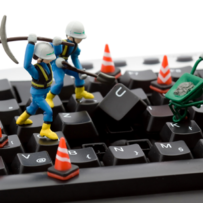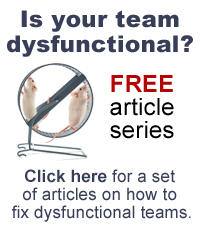How do I stop my workday being overwhelmed by gadgets?

The Globe and Mail, Mar. 06 2012
The question
With all the technology today and many people and devices competing for my time, and providing a distraction, can you give me some specific time management tips to help me succeed at my job?
The answer
Without a doubt, this has to be the primary struggle of everyone I am coaching these days. Everyone is struggling with the volume of e-mail and devices we are all using and the incredible time suck they have become, plus the volume of work and information we are expected to process and the speed with which we are being asked to work. There is no magic bullet to slay this dragon, but there are some very specific steps you can take to get back the control and the energy to do it.
And unfortunately, just doing one of the things below will not be enough. You need to do them all. Sorry.
Get crystal clear on your priorities
Get crystal clear on your priorities, both big picture, as well as weekly and daily. It’s up to you to carve out the time to speak with your team and ensure you are on the same page in terms of big-picture priorities. Then, daily, you have to take the time to write a specific to-do list. Know what you must get done, and stick to your tasks. For more on this, get a copy ofMastering the Rockefeller Habits and digest Chapter 5, which talks about knowing your priorities. This is the first step to getting your time under control.
Manage your in-box – don’t let it manage you
Some of the most innovative ideas I’ve read about saving time that actually stuck with me came from Timothy Ferriss’s book The 4-Hour Workweek. In terms of e-mail, he decided to create an auto-responder that basically told people when he would be checking e-mail throughout the day or week, and invited people to call his cellphone if it was more urgent than that. I thought this was so simple. Basically, he created boundaries around when he would check his e-mail, and otherwise, turned it off. Simply put, he took control. Only you will know the boundaries that will work in your office, but I challenge you to set aside a maximum of three times per day to check e-mail, and to set aside about 30 minutes each time to look into them, Then, take care of the simple ones, and add the others to your to-do list. Between these times, turn it off.
Which alerts can you turn off?
When we have a cellphone that rings when a call comes in, dings when an e-mail comes in, pings when a text comes in, plus a phone on our desk, a computer on our desk with internal instant messaging … oh yeah, and a Facebook page, LinkedIn account, a home phone line … we simply have to turn some of them off. They can’t all be going, all the time. Which alerts can you turn off? Which can you get rid of all together? Which do you really need? How can you streamline how you receive information to take back some control? Personally, I always leave the volume on my desk computer off (and only turn it on when I need it) so I don’t get constantly dinged, and turn my screen to “black” whenever I am on the phone (which is a lot in my job), so I am not easily distracted.
How do you refill your tank
You also need to ensure that as you drain your energy each day, you fill your tank back up. What are you doing to re-energize yourself? Our mental and emotional energy levels are constantly drained at work. Our physical energy can be compromised if we don’t reserve enough time to eat right, exercise and sleep. And our spiritual energy is tapped if we don’t do work that we are passionate about, that is aligned with our values and that gives us a real sense of purpose. You have to design your life such that you allow adequate time to fill your tank back up: Do work that you love; take regular breaks during the day; keep weekends sacred; take your holidays; eat well; exercise regularly; see friends, go to the movies, take an art class, go for a long walk at lunchtime … basically anything that gives you back your energy. Here, you’ll want to read “ The Power of Full Engagement: Managing Energy, Not Time, is the Key to High Performance and Personal Renewal, by Jim Loehr and Tony Schwartz. The book’s title says it all.
Katie Bennett is a coach and speaker and head of Double Black Diamond Coaching in Vancouver.






